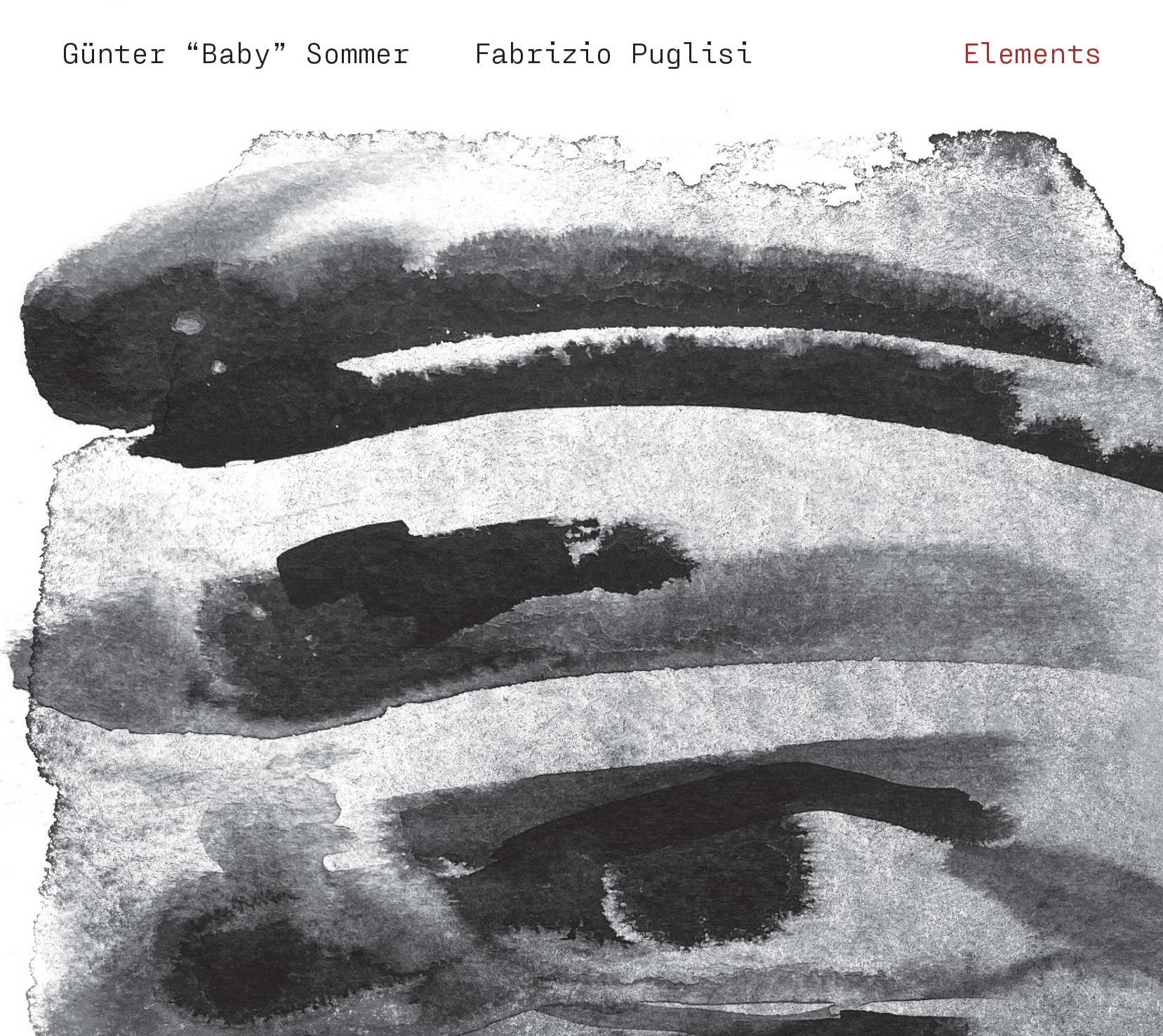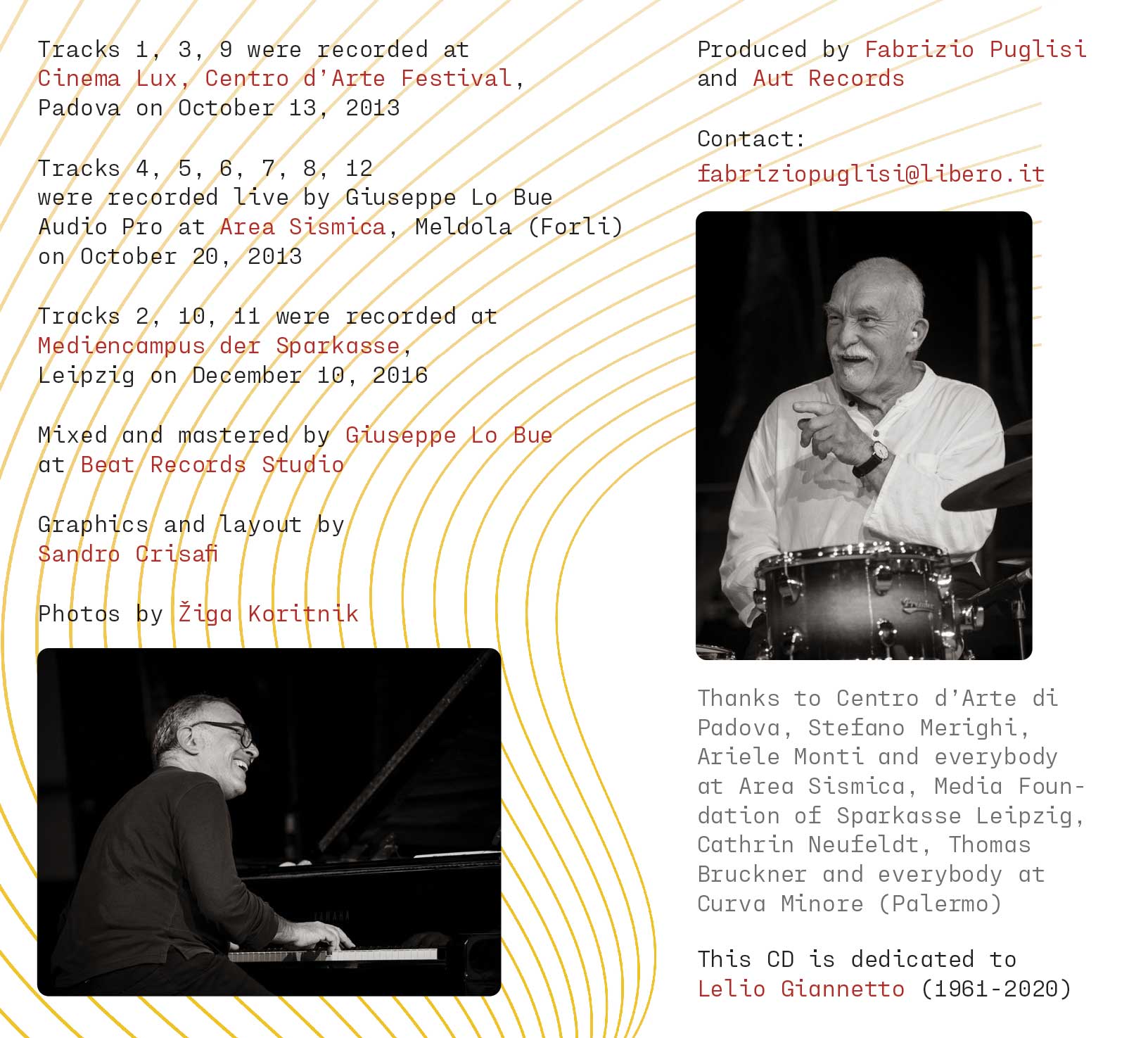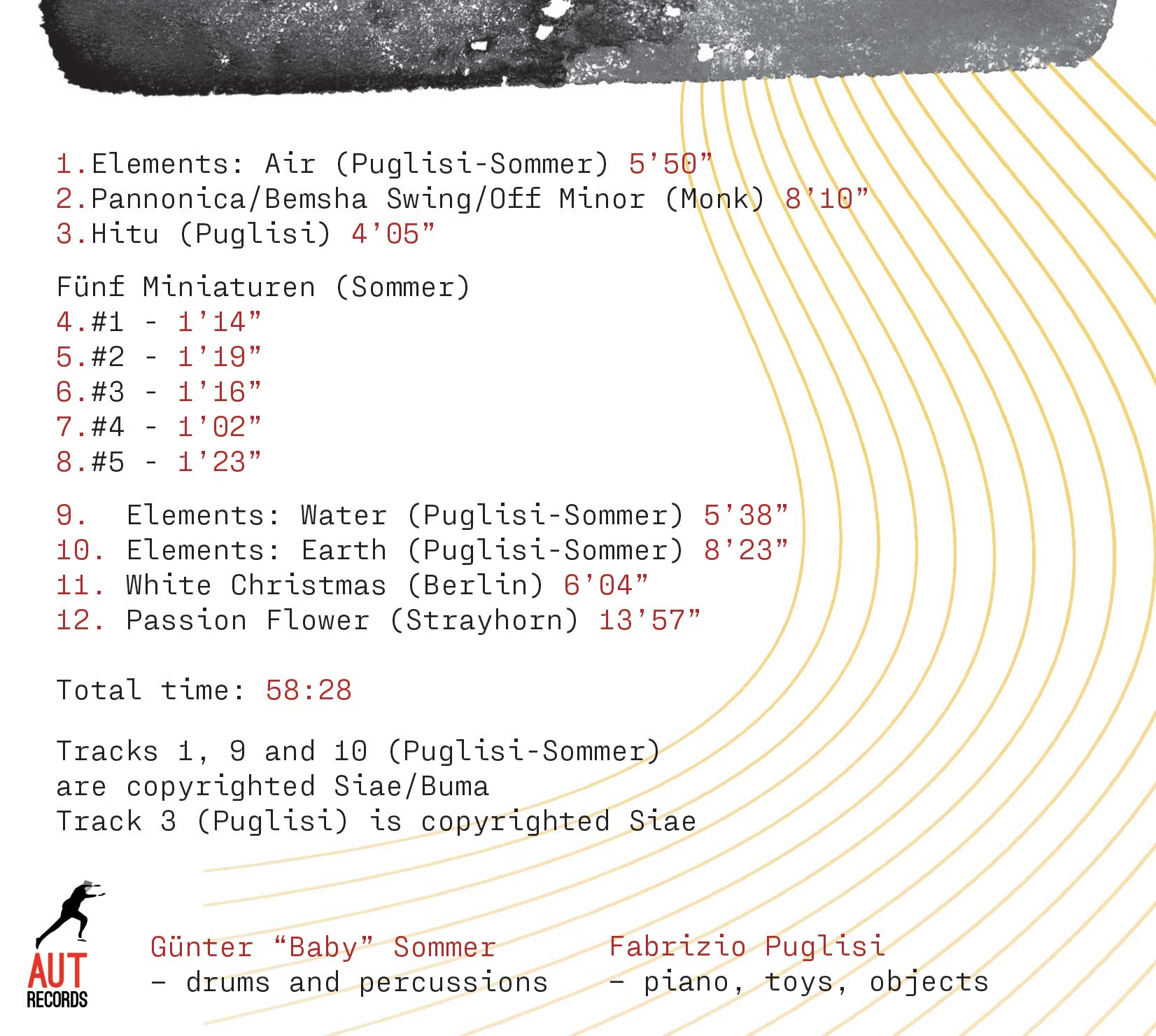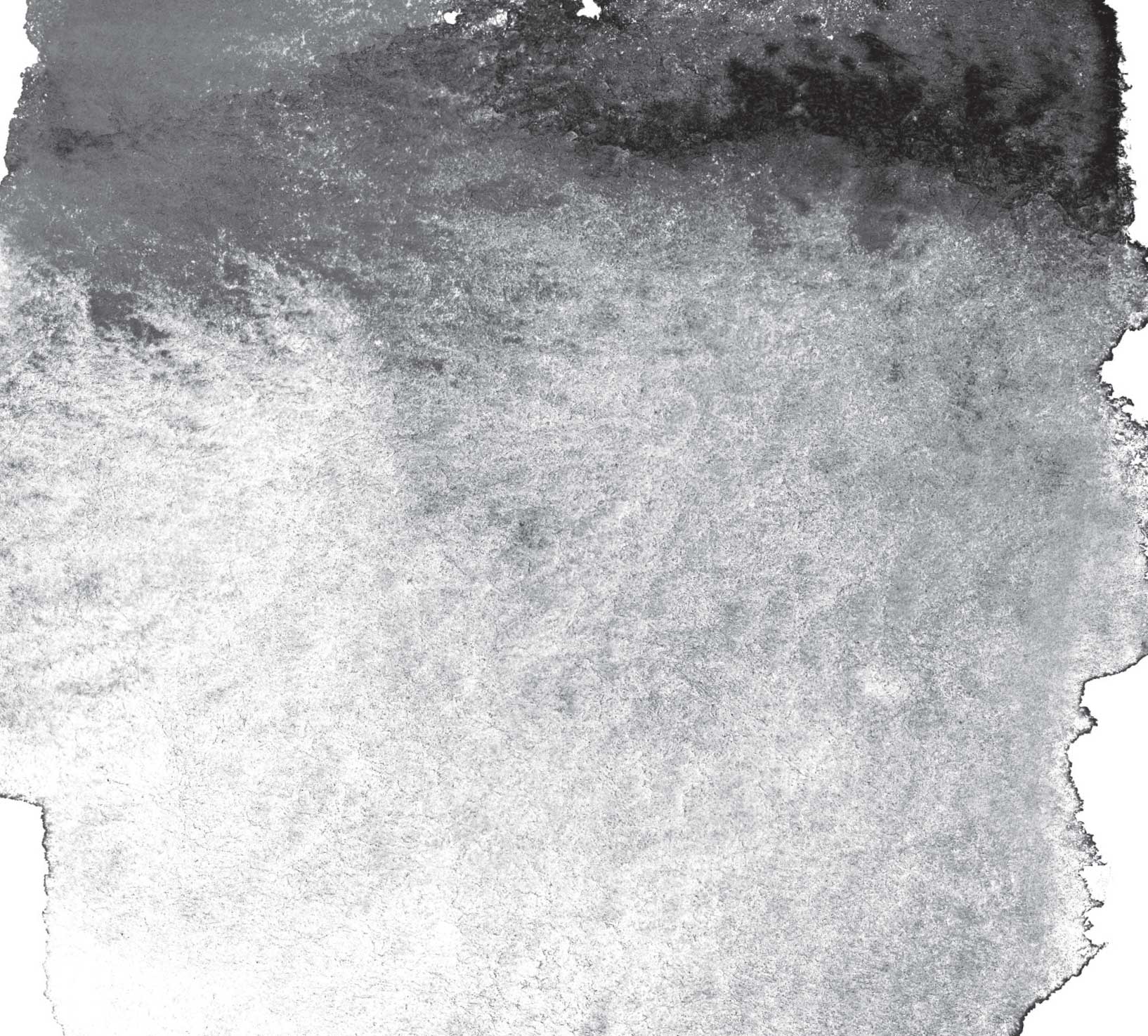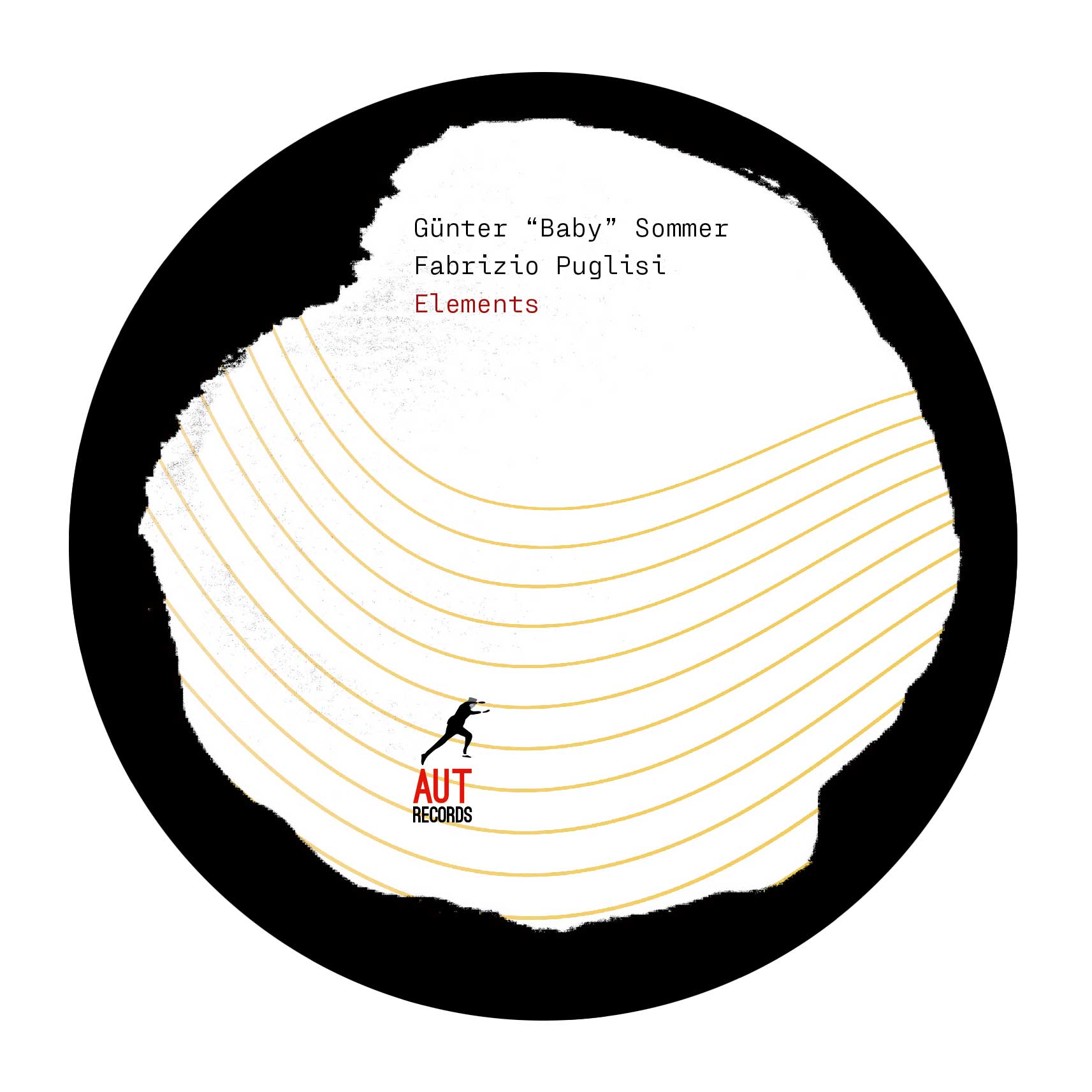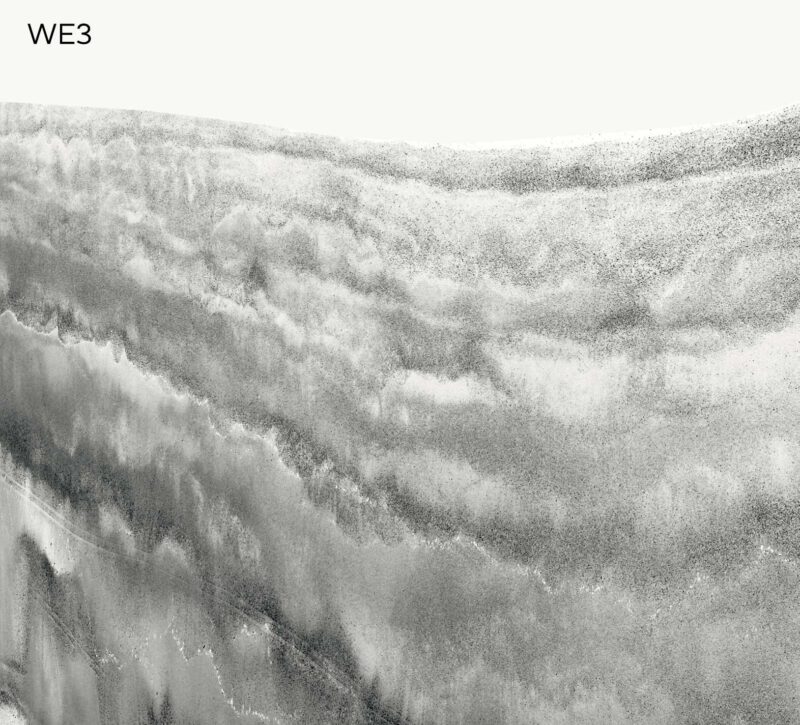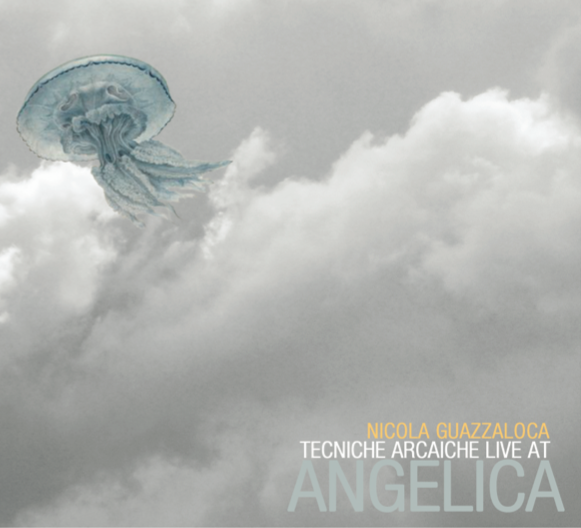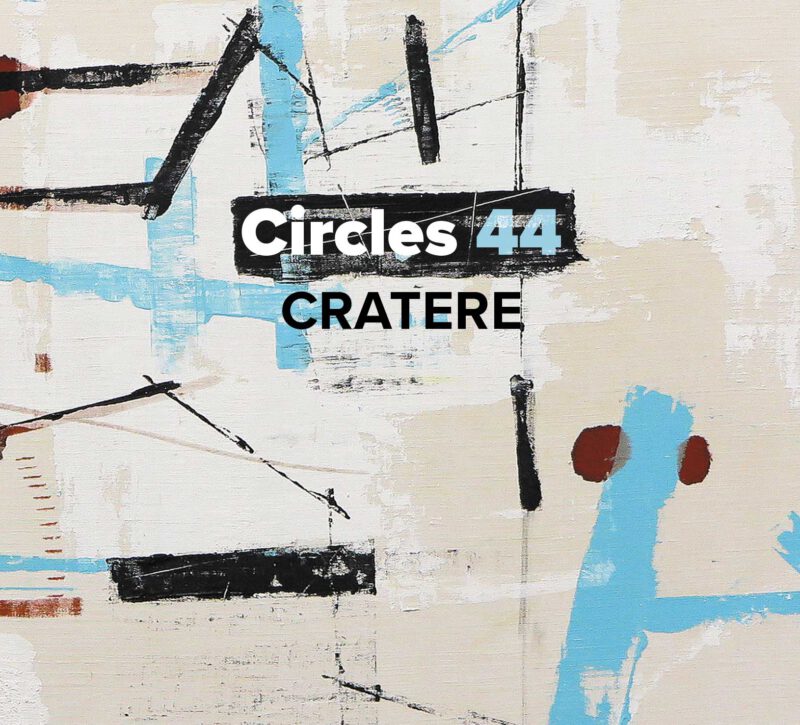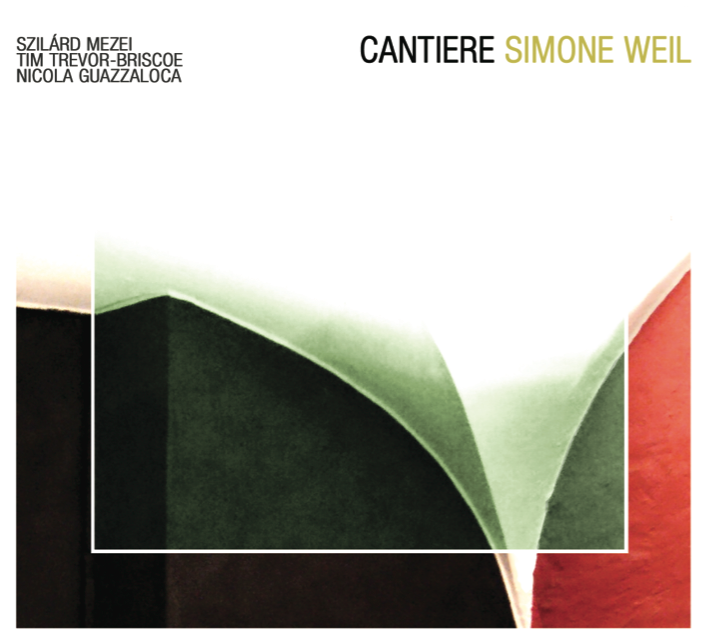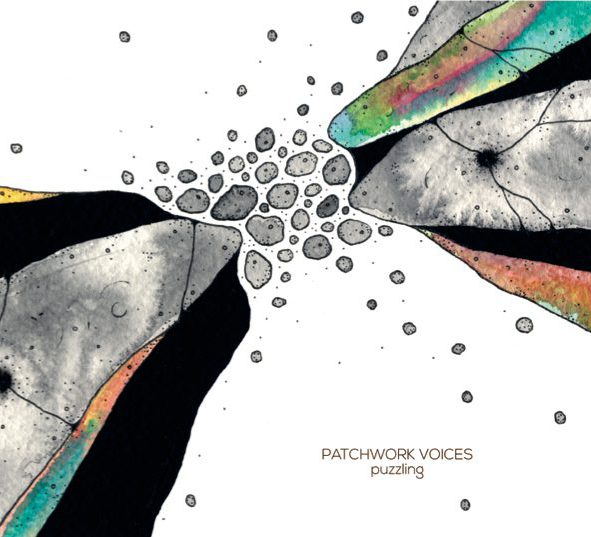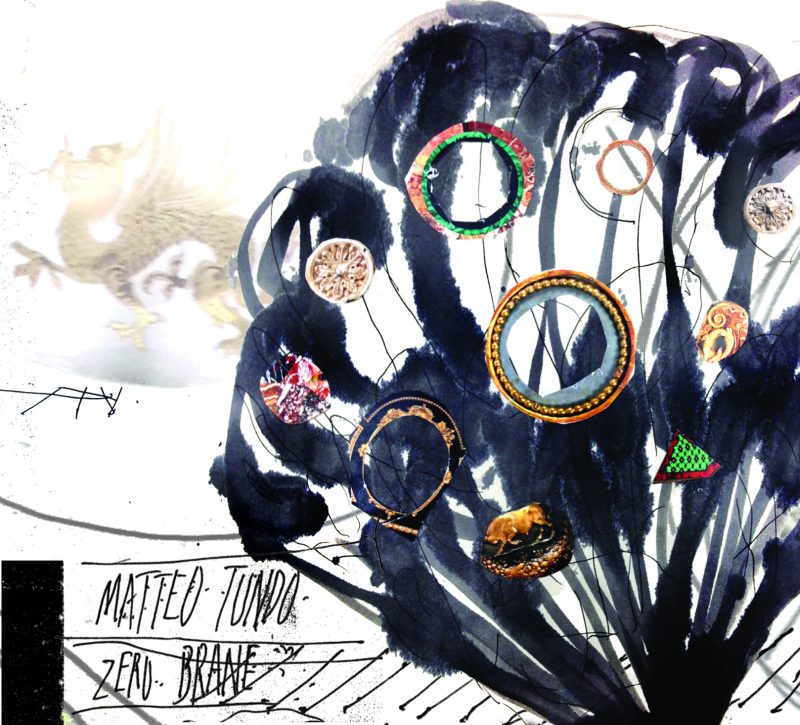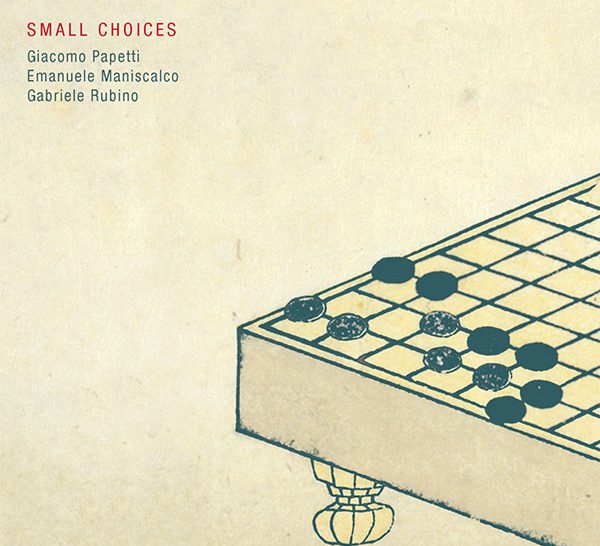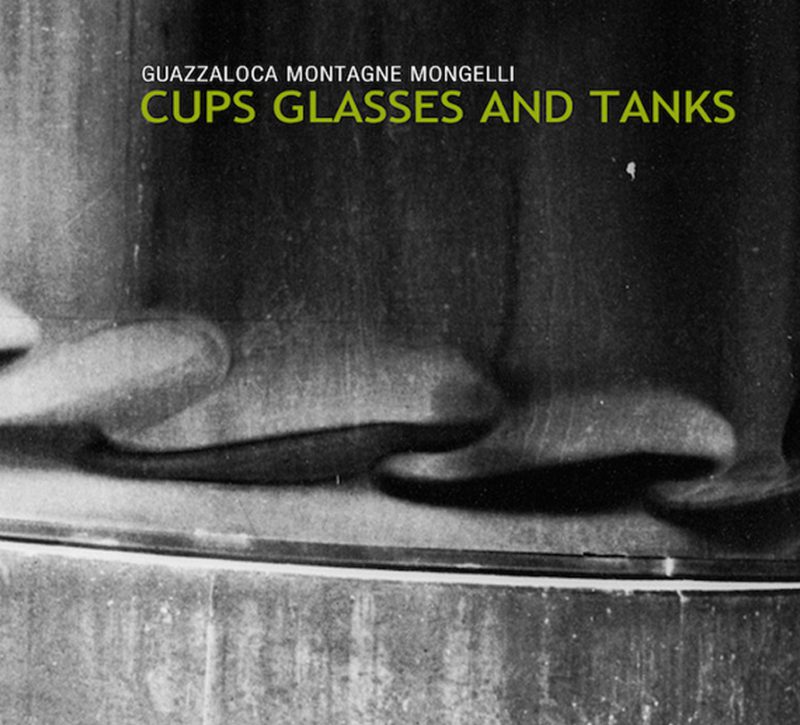Listen
Buy lossless digital version in our Bandcamp digital storeTracklist
01. Elements: Air – 05:50
02. Pannonica/Bemsha Swing/Off Minor – 08:10
03. Hitu – 04:05
04. Fünf Miniaturen: 1 – 01:14
05. Fünf Miniaturen: 2 – 01:19
06. Fünf Miniaturen: 3 – 01:16
07. Fünf Miniaturen: 4 – 01:02
08. Fünf Miniaturen: 5 – 01:23
09. Elements: Water – 05:38
10. Elements: Earth – 08:23
11. White Christmas – 06:04
12. Passion Flower – 13:57
Total Time: 58:28
Video
Credits
Tracks 1-9-10 by Günter Sommer and Fabrizio Puglisi
Track 2 by Thelonious Monk
Track 3 by Fabrizio Puglisi
Tracks 4-8 by Günter Sommer
Track 11 by Irving Berlin
Track 12 by Billy Strayhorn
Tracks 3, 9 were recorded at Cinema Lux for Centro d Arte, Padova
Tracks 4, 5, 6, 7, 8, 12 were recorded at Area Sismica, Meldola (Forli) on October 20th, 2013
Tracks 1, 2, 10, 11 were recorded at Mediencampus Der Sparkasse, Leipzig on December 10th, 2016
Mixed and mastered by Giuseppe Lo Bue at Studio Caffeina in Bologna
Graphic design by Sandro Crisafi
Produced by Fabrizio Puglisi and Aut Records
This CD is dedicated to Lelio Giannetto (1961-2020)
Description
Fabrizio Puglisi and Günter Sommer are two key musicians of the European avant-jazz scene.
Coming from two different generations and different paths, they started to play together in 2013 and, since then, their musical relationship kept growing in intensity and interplay. They played often in duo in many concerts and festivals in Palermo, Leipzig, Sant’Anna Arresi, Talos Festival in Puglia, Angelica Festival in Bologna, Centro d’Arte in Padova, Area Sismica and they will present their album on December 13th in Bologna at Mercato Sonato.
Through their live encounters, they constantly sought new ways in which their instruments could open up new possibilities of expression. In their freer pieces, melody, rhythm, and timbre are not only used as standard parameters through which express themselves. Rather, in a kind of channeling, they use these aspects to exchange their roles and become ‘the other’. Furthermore, the renditions of some well-known standards are telling us that there is no “old” material that can not become something new. From the old to the new, here we stand!
